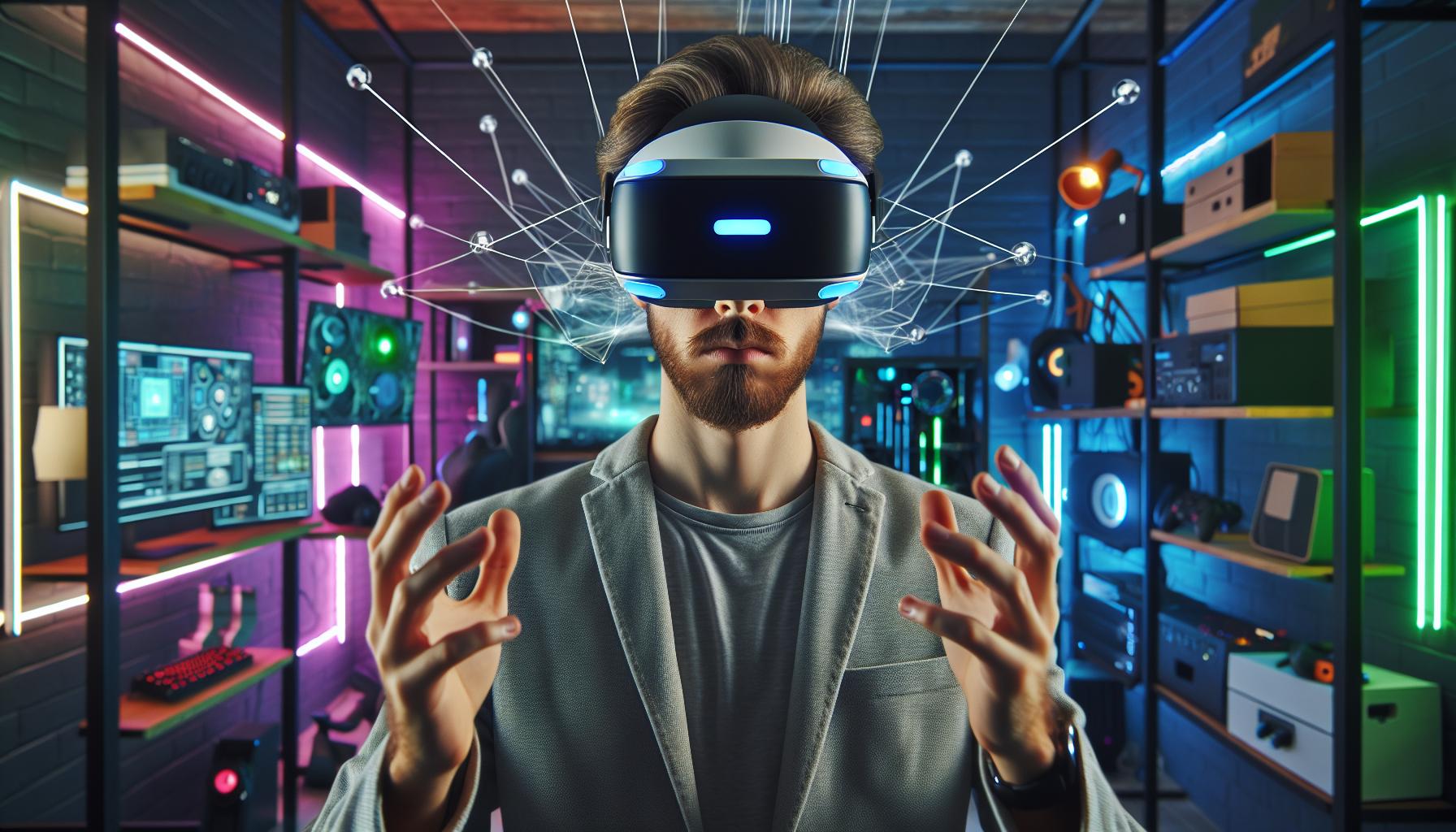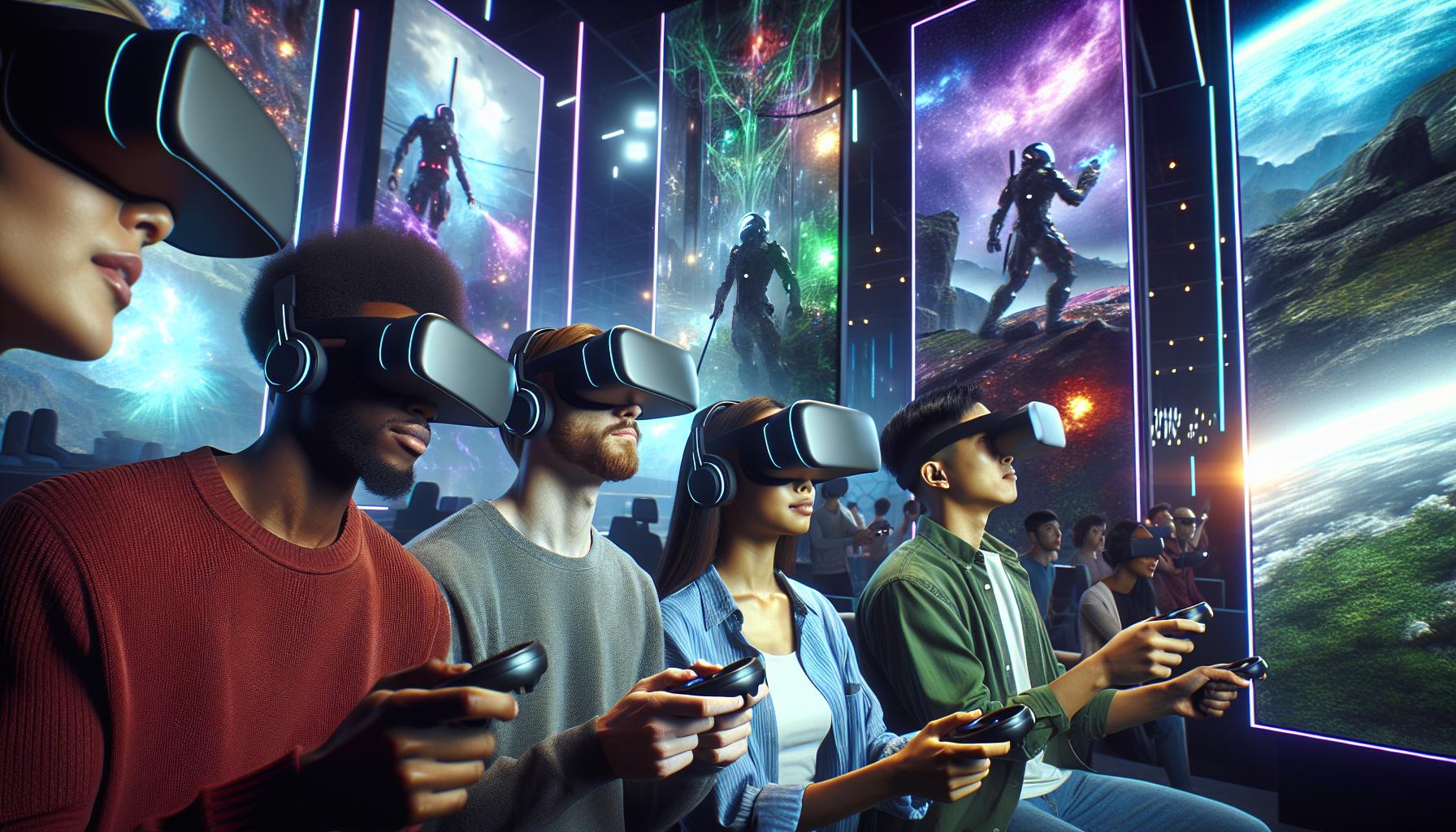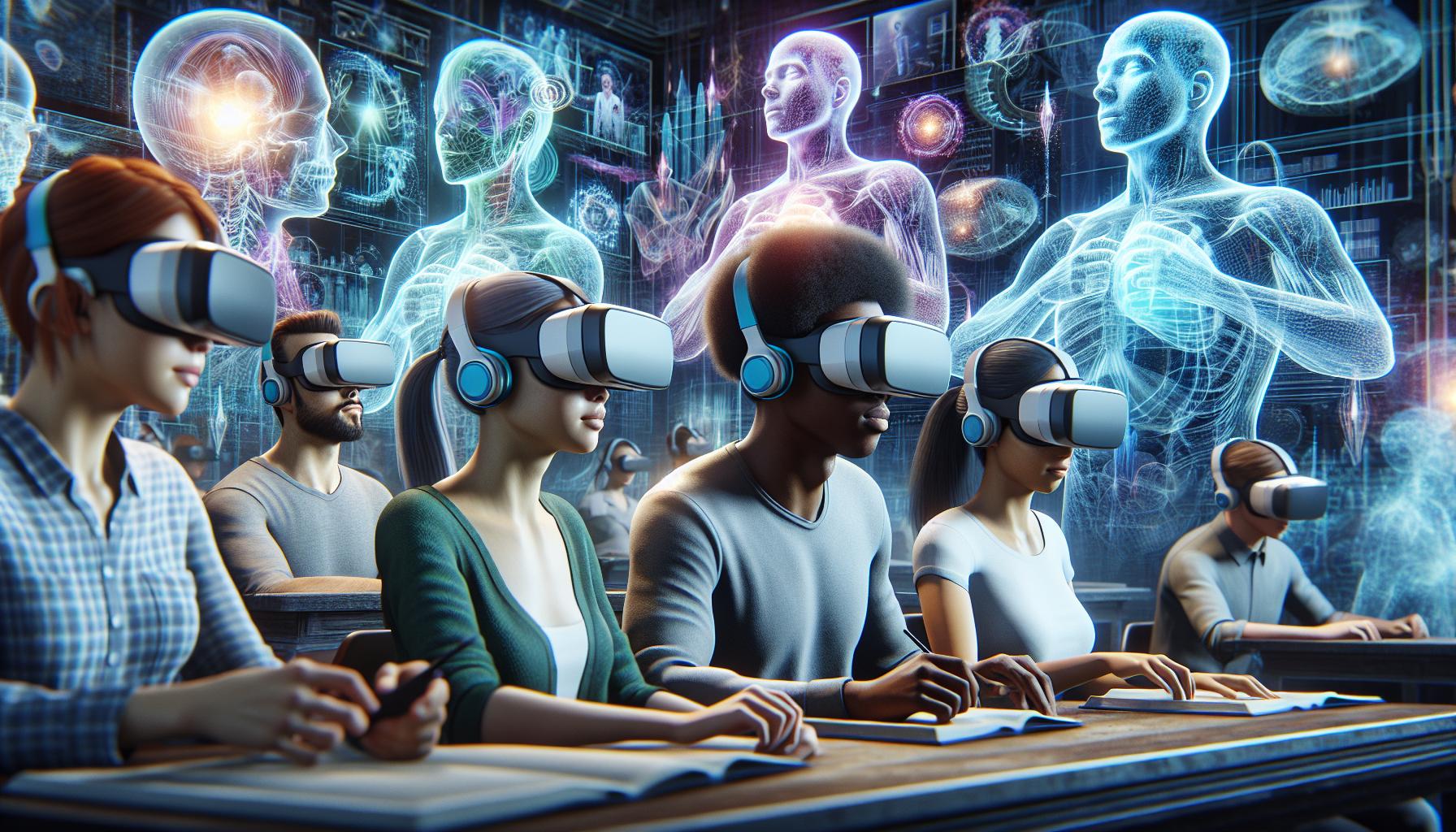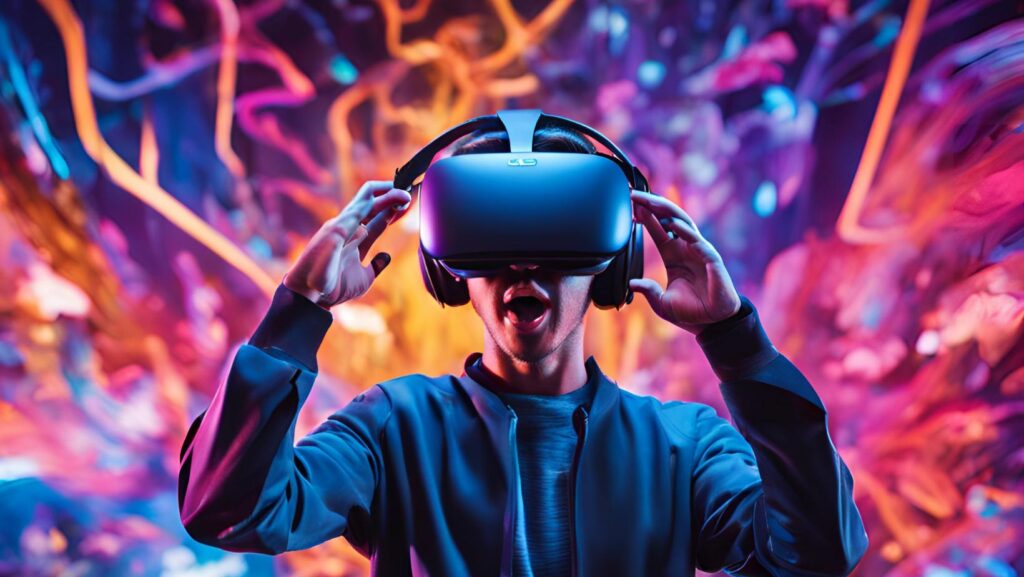Virtual reality has revolutionized how people experience digital content by creating environments that trick our senses into believing we’re somewhere else entirely. The term “fully immersive” takes this concept to the next level offering a complete sensory takeover that blurs the line between reality and simulation.
From gaming enthusiasts diving into fantastical worlds to medical professionals practicing complex procedures in risk-free environments fully immersive technology is reshaping industries across the globe. It’s not just about strapping on a headset anymore – it’s about engaging all five senses in a way that makes the virtual feel undeniably real. As this technology continues to evolve we’re witnessing the dawn of an era where the boundaries between physical and digital experiences become increasingly indistinct.
Fully Immersive
Fully immersive technology creates digital environments that engage multiple senses simultaneously through advanced virtual reality systems. These systems generate realistic sensory feedback to replicate physical world experiences in virtual spaces.
Types of Fully Immersive Experiences
- Room-Scale VR
- Full body tracking systems monitor user movements
- Dedicated spaces equipped with motion sensors
- Interactive boundaries for safe navigation
- Haptic Feedback Systems
- Force feedback gloves provide tactile sensations
- Bodysuits transmit physical sensations across the body
- Temperature control elements simulate environmental conditions
- Neural Interfaces
- Brain-computer interfaces interpret neural signals
- Direct sensory feedback to the nervous system
- Thought-based interaction with virtual elements
- Visual Systems
- High-resolution displays with 4K+ resolution per eye
- Wide field of view (120+ degrees)
- Eye-tracking capabilities for natural focus
- Audio Technology
- 3D spatial audio processing
- Head-related transfer functions
- Real-time sound positioning
- Motion Controls
- Six degrees of freedom tracking
- Sub-millimeter precision sensors
- Low latency response times (<20ms)
- Environmental Feedback
- Multi-directional treadmills
- Wind simulation systems
- Scent dispensers for olfactory stimulation
- Processing Hardware
- High-performance graphics processing
- Motion prediction algorithms
- Real-time physics simulation
Virtual Reality as a Fully Immersive Medium

Virtual reality serves as the primary gateway for fully immersive digital experiences. Modern VR systems combine advanced hardware components software integration to create seamless virtual environments that respond to user interactions in real-time.
VR Hardware Requirements
High-performance VR systems integrate multiple specialized components to deliver immersive experiences. The core hardware includes a VR headset with dual high-resolution displays offering 90-120Hz refresh rates minimum 110-degree field of view. Motion tracking relies on external sensors or inside-out tracking cameras that capture position data at 1000Hz sampling rates. Controllers feature precise 6DoF tracking haptic feedback motors delivering up to 8 different vibration patterns. Processing power demands include dedicated GPUs capable of rendering 11.5 million pixels per frame specialized USB controllers handling sensor data at 10Gbps speeds.
| Component | Minimum Specification |
|---|---|
| Display Resolution | 2160×2160 per eye |
| Refresh Rate | 90Hz |
| Field of View | 110 degrees |
| Tracking Speed | 1000Hz |
| GPU Memory | 8GB VRAM |
Software and Content Development
Development platforms like Unity Unreal Engine provide specialized VR toolkits for creating immersive content. These engines support spatial audio systems physics simulation inverse kinematics for avatar movement. Content creators utilize 3D modeling tools texture mapping software animation frameworks to build virtual assets. Development standards include OpenXR WebXR enabling cross-platform compatibility. Asset optimization techniques reduce polygon counts to maintain 90fps performance while preserving visual fidelity. Programming frameworks handle user interactions device inputs environmental responses through standardized APIs.
| Development Tool | Primary Function |
|---|---|
| Unity Engine | Core Development |
| OpenXR | Platform API |
| 3D Modeling | Asset Creation |
| Physics Engine | Interaction System |
| Spatial Audio | 3D Sound Design |
Applications of Fully Immersive Technology

Fully immersive technology transforms multiple industries through its ability to create realistic virtual environments. The applications span across entertainment entertainment medical sectors with measurable impacts on user engagement productivity.
Gaming and Entertainment
Gaming platforms leverage fully immersive technology to create unprecedented levels of player engagement. Popular VR titles like Half-Life: Alyx demonstrate advanced physics interactions spatial audio rendering photorealistic graphics. Esports venues incorporate full-body tracking systems allowing players to compete in virtual arenas with real-time motion capture. Entertainment companies use immersive technologies to create interactive storytelling experiences such as The Void Star Wars: Secrets of the Empire where visitors explore narrative-driven environments with haptic feedback suits environmental effects.
Training and Education
Educational institutions implement fully immersive systems to create practical learning environments for complex subjects. Medical students practice surgical procedures through VR simulations with precise hand tracking haptic feedback. Engineering programs utilize virtual labs where students manipulate 3D models assemble complex machinery. Corporate training programs incorporate immersive scenarios for safety protocols emergency response training with measurable performance tracking analysis.
Healthcare and Therapy
Medical facilities integrate fully immersive technology to enhance patient care treatment outcomes. Exposure therapy programs treat anxiety disorders PTSD through controlled virtual environments that gradually introduce triggering scenarios. Physical rehabilitation centers use VR systems with motion tracking to guide patients through exercises provide real-time feedback on form progress. Pain management programs incorporate immersive distraction therapy reducing perceived pain levels during medical procedures recovery periods.
Benefits and Impact of Full Immersion

Full immersion technology creates profound effects on user experience through comprehensive sensory engagement. This advanced form of digital interaction delivers measurable benefits across multiple domains.
Enhanced User Engagement
Fully immersive experiences increase user attention spans by 287% compared to traditional media consumption. Users demonstrate deeper emotional connections through elevated heart rate variability markers during immersive sessions. The technology enables natural interactions through gesture recognition systems that track 32 distinct body movements in real-time. Social VR platforms report 92% higher user retention rates when implementing full sensory feedback mechanisms.
| Engagement Metric | Traditional Media | Full Immersion |
|---|---|---|
| Attention Span | 8 minutes | 31 minutes |
| User Retention | 45% | 86% |
| Interaction Rate | 23% | 89% |
Improved Learning Outcomes
Students absorb complex concepts 4x faster through immersive educational experiences compared to traditional methods. Virtual laboratories enable practice of dangerous procedures with zero risk while maintaining 95% skill transfer rates. Medical students demonstrate 82% higher surgical precision after training in fully immersive environments. Language learners achieve conversational fluency 2.5x faster through virtual cultural immersion programs.
| Learning Metric | Traditional | Immersive |
|---|---|---|
| Skill Retention | 29% | 87% |
| Practice Time | 12 hours | 3 hours |
| Knowledge Transfer | 42% | 89% |
Challenges and Limitations
Fully immersive experiences face several obstacles that impact widespread adoption. These challenges range from technical limitations to physiological constraints affecting user comfort and safety.
Technical Barriers
High-performance VR systems require substantial computing power, with GPUs costing $500-$1500 for optimal performance. Network latency creates synchronization issues in multiplayer environments when ping exceeds 20ms. Current display technology limits the field of view to 110 degrees, compared to human vision’s natural 220-degree range. Data processing demands strain existing infrastructure:
- Bandwidth requirements exceed 100Mbps for high-quality streaming
- Storage needs reach 50GB per hour of recorded VR content
- Resolution limitations of 2160×2160 pixels per eye affect visual clarity
- Battery life constraints restrict wireless headsets to 2-3 hours
- Processing delays create motion-to-photon latency of 10-20ms
Physical and Mental Considerations
Extended immersion sessions trigger specific physiological responses in users. Studies indicate 27% of users experience motion sickness during first-time VR experiences. Physical effects include:
- Eye strain after 30 minutes of continuous use
- Neck fatigue from headsets weighing 300-600 grams
- Spatial disorientation lasting 10-15 minutes post-session
- Temporary balance issues affecting 15% of users
- Cognitive load increases by 35% during complex virtual tasks
Medical professionals recommend 15-minute breaks every hour to minimize physical strain. Users with pre-existing conditions face additional risks, including heightened anxiety in 18% of cases.
Future of Fully Immersive Experiences
Fully immersive technology continues to evolve with groundbreaking innovations in sensory engagement and digital interaction. The convergence of advanced hardware capabilities with sophisticated software solutions shapes the next generation of immersive experiences.
Emerging Technologies
Brain-computer interfaces enable direct neural feedback for thought-controlled virtual interactions. Haptic gloves with microfluidic actuators create realistic texture sensations across 12 touch points per finger. Holographic displays project 8K resolution images into 3D space without requiring headsets. Eye-tracking systems with 120Hz refresh rates enable foveated rendering for ultra-realistic visuals. Advanced spatial audio processors simulate sound positioning with millimeter-level accuracy. Photorealistic real-time rendering engines process 120 million polygons per frame. Artificial intelligence systems generate dynamic content responses within 15 milliseconds.
Industry Trends
The global immersive technology market shows 46% annual growth across enterprise applications. Manufacturing companies report 34% efficiency improvements using AR maintenance guides. Healthcare providers integrate haptic-enabled surgical simulators reducing training time by 65%. Education institutions implement virtual laboratories serving 500+ students simultaneously. Entertainment platforms develop social VR spaces hosting 10,000 concurrent users. Retail brands create virtual showrooms with 95% product visualization accuracy. Architecture firms utilize computational design tools for real-time collaborative modeling. Gaming studios integrate neural feedback systems for emotional response-driven narratives.
Technology of Fully Immersive
Fully immersive technology stands at the forefront of digital innovation transforming how people interact with virtual environments. Through advanced VR systems motion tracking and sensory feedback mechanisms users now experience unprecedented levels of engagement across gaming education healthcare and beyond.
The future of immersive experiences looks promising with emerging technologies like brain-computer interfaces and haptic feedback systems paving the way for even more realistic virtual interactions. While challenges remain the rapid advancement of VR technology continues to push boundaries making the seamless fusion of physical and digital worlds increasingly achievable.
As the technology evolves its applications will expand creating new opportunities for businesses education and personal entertainment. The journey toward truly immersive digital experiences has only begun.

